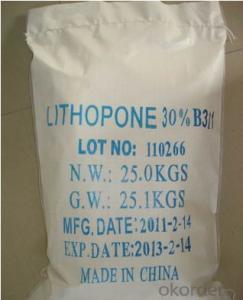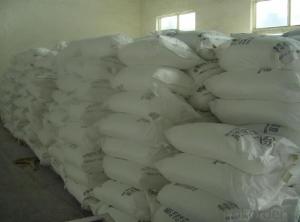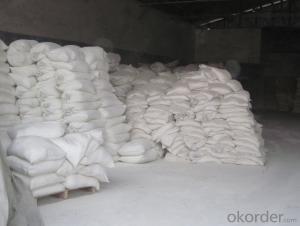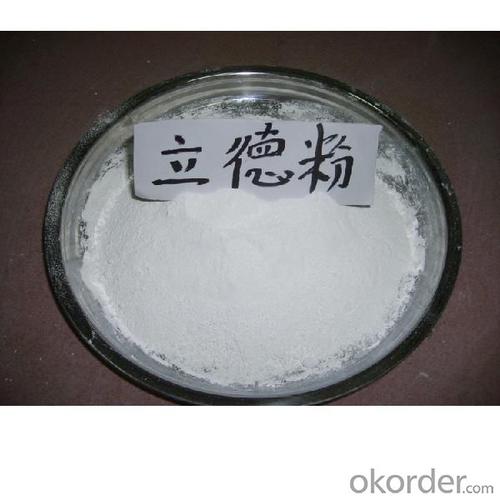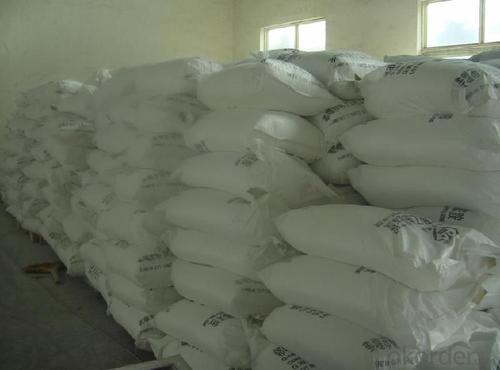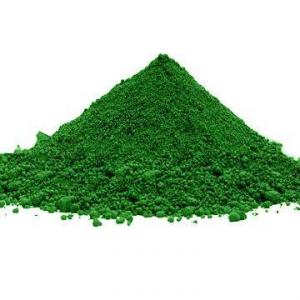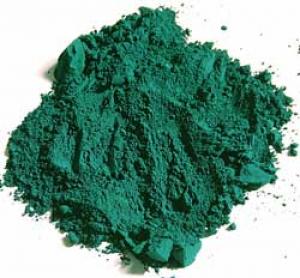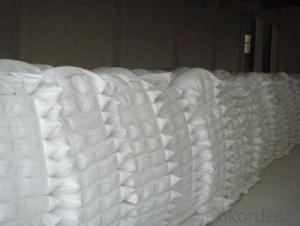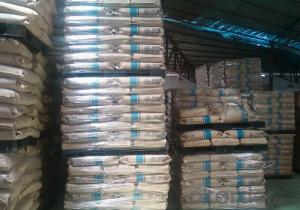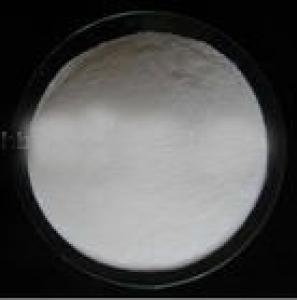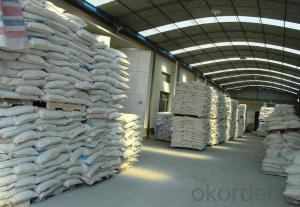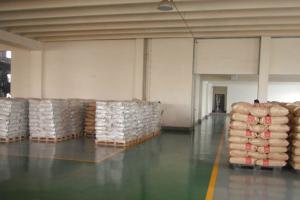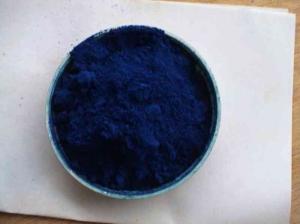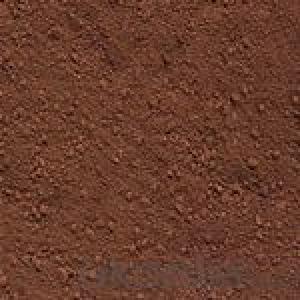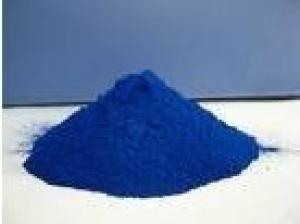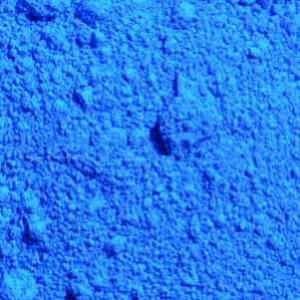Lithopone 28-30% Lithopone B301 , B311 low price
- Loading Port:
- Tianjin
- Payment Terms:
- TT OR LC
- Min Order Qty:
- 20 m.t.
- Supply Capability:
- 2000 m.t./month
OKorder Service Pledge
OKorder Financial Service
You Might Also Like
Specifications of Lithopone
Lithopone ZnS-BaSO4
1. zinc: 28-30%,30%
2. Uses:paints,printing inks,coating,paper pigment,plastic
3. ISO,SGS
4. 25kg/bag
Lithopone ZnS-BaSO4 :
1. Commodity:
Lithopone (ZnS-BaSO4) for paint ink plastic paper etc
--------------------------------------------------------------------------------------------------------------
2. Description:
Lithopone B301 is a kind of lithopone whose hiding power is better than that of zinc oxide and worse than that of titanium dioxide.It has good heat-resisitance and is insoluble in water.
White powder, is a mixture of zinc sulfide and barium sulfate. Have high whiteness and good covering power. It is called Inorganic white pigment. Widely used as white pigment of plastics such as polyolefin, vinyl resin, ABS resin, polystyrene, polycarbonate, nylon and polyoxymethylene (POM), also for paint and ink . it is use to colourate for rubber products , linoleum, leather, paper, enamel.
-----------------------------------------------------------------------------------------------------------------
3. Features:
1) A white pigment produced by precipitation through filtering,
heating and quenching works
2) Has mostly been replaced by titanium dioxide which is more
durable, but it is much cheaper
---------------------------------------------------------------------------------------------------------------
4. Application:
Mainly used of coatings, printing ink, rubber, plastic, powder, profiles, paint, paper, and leather, etc.
1) Used as a base for lake pigment
2) Used as a inert pigment for paint, ink and cosmetics
3) A large range of applications in plastic industry
4) Used as a filler in paper, leather, and linoleum
---------------------------------------------------------------------------------------------------------------
5. Packaging:
Packing:25kgs per bag or according customer's requirements.
--------------------------------------------------------------------------------------------------------------
6. Specifications:
| ITEM | SPECIFICATIONS |
Zinc oxide,% | ≤0.60 |
Total zinc(on zinc sulfide basis),% | ≥28 |
Quality standard | GBT1707-95 |
Tinting strength(Relative) | ≥105 |
Total zinc sulfide and barium sulfate | ≥99.0 |
Water soluble % | ≤0.40 |
Oil absorption,g/100g, | ≤14.0 |
Sieve residue 45um % | ≤0.10 |
Volatile at 105°C g/100g | ≤0.30 |
Color | Not lower than standard sample |
| Hiding Power(contrast ratio) | Not lower than 5% of standard sample |

- Q: thank you very much for your help!
- photosynthetic pigment or antenna pigment is a pigment that is present in chloroplasts or photosynthetic bacteria and captures the light energy necessary for photosynthesis. Green plants have five closely-related photosynthetic pigments (in order of increasing polarity): Carotene - an orange pigment Xanthophyll - a yellow pigment Chlorophyll a - a blue-green pigment Chlorophyll b - a yellow-green pigment Phaeophytin a[1] - a gray-brown pigment Phaeophytin b[1] - a yellow-brown pigment Chlorophyll a is the most common of the six, present in every plant that performs photosynthesis. The reason that there are so many pigments is that each absorbs light more efficiently in a different part of the spectrum. Chlorophyll a absorbs well at a wavelength of about 400-450 nm and at 650-700 nm; chlorophyll b at 450-500 nm and at 600-650 nm. Xanthophyll absorbs well at 400-530 nm. However, none of the pigments absorbs well in the green-yellow region, which is responsible for the abundant green we see in nature.
- Q: what are the accessory pigments in plant photosynthesis?
- The photosynthetic pigments are of two types, primary pigments and accessory pigments. The accessory pigments pass the emitted electrons to the primary pigments. Electrons are then emitted from the primary pigments and it is these that drive the photosynthetic process. The two primary pigments are both forms of chlorophyll a, called P690 and P700 (absorbing light best at 690 and 700 nm wavelengths, respectively). The accessory pigments include other forms of chlorophyll a, chlorophyll b and carotenoids. The light energy trapping systems of the plant are called photosystem I and photosystem II. Energy capture traps of photosystems I and II (in the quantosomes) light energy The quantosomes are regularly spaced particles embedded in the thylakoids, and are either large or small. It is probable that the large quantosomes contain photosystem II and reaction centre II and the small quantosomes contain photosystem I and reaction centre I.
- Q: What is better, Mac eye pigments or the regular eyeshadow? Also, has anyone tried the mixing medium solution?
- the pigments are more concentrated, but there's more of a color variety with the shadows. on the shadows, if you look under the name it'll tell you the formulation...satin, luster etc...but the ones marked luster and frost are my favorites and they are more vivid and as far as the mixing medium, just dampen (dont wet) your brush and its the same
- Q: Why does a plant use several pigments instead of one or two?Why are plant leaves green?
- Pigments are a way for a plant to absorb the sun's energy in the form of light (photosynthesis). The different colored pigments absorb different wavelengths of light and pass it on directly to the plant to make energy, except for one class called the carotenoids, which much pass it on the the chlorophyll before anything happens The plants leaves are green because they absorb all the other wavelengthss (red, blue, oragne etc) except the green one, and the reflection of the green is what our eyes see.
- Q: I am about to purchase a bunch of MAC pigments and I have noticed that they all look glittery, is this just the kind that i am looking at? I know they are versatile, so that is why i want to buy them. And it seems as though they will last longert than eyeshadow...
- they will last A LOT longer then eye shadows. and if you dont want the pigment to be as shiny i would suggest to mix it with an eyeshadow. i have also noticed they r all very glittery. sorry if this didnt help much Good luck! :)
- Q: can pigment ink be used to tattoo?
- Pigment ink? Tattoo ink is pigment ink. Printer ink is pigment ink. Crayola markers are pigment ink. It all comes down to what it's manufactured for and whom is doing the manufacturing. Reputable shops use certain brands of tattoo ink for a reason. Using something not made for the human body at all makes for an ugly tattoo and can cause infections or other problems seeing as nothing in it's manufacturing process is sanitary or compatible with use in skin.
- Q: I know the difference between the two, but which do you prefer? Which has a better color payoff? And, which do you own more of?
- The pigment has a BETTER pay off. I prefer eyeshadow for everyday and pigment for special occasions or going out at night! I own more e/s
- Q: Can someone describe the role of accessory pigments in photosynthesis?
- help the primary pigments gather sunlight and adds color to the plant
- Q: i want to get mac melon pigment but i dont know what other eyeshadows to pair and blend it with. im looking for an everyday look. also what brushes to use with pigments?
- With the Melon pigment, I would recommend using warm, chocolate copper, bronze types of colors. It will provide a nice contrast to the melon while giving your eyes some added depth and definition. As far as brushes go, I like using the 252, large shader brush. This brush picks up pigment nicely and it has nice compressed/dense bristles so you can manipulate and lay the pigment down with greater ease. I like the #286 The dual fiber blending brush for pigments as well. It's made of natural fiber and synthetic fiber. This is a great brush because you really get 2 brushes in 1. With this 'blending' brush you can also use it for targeted color deposits and the synthetic fibers won't suck up what you just laid down and you will get a flawless, beautifully blended eyeshadow application.
- Q: HW HELP THIS IS COMLPCATED
- Pigments in plants color every part: red rose, orange carrot, purple plums. These pigments are not photosynthetic their function varies with location in the plant and the season. Chlorophylls are the primary photosynthetic pigment class found in chloroplasts. Flavonoids like the anthocyanins provide red, blue, purple, or magenta color to flowers and fruits. Color serves to attract pollinators and seed distributors. Recent literature reports some 550 different anthocyanins.
Send your message to us
Lithopone 28-30% Lithopone B301 , B311 low price
- Loading Port:
- Tianjin
- Payment Terms:
- TT OR LC
- Min Order Qty:
- 20 m.t.
- Supply Capability:
- 2000 m.t./month
OKorder Service Pledge
OKorder Financial Service
Similar products
Hot products
Hot Searches
Related keywords
